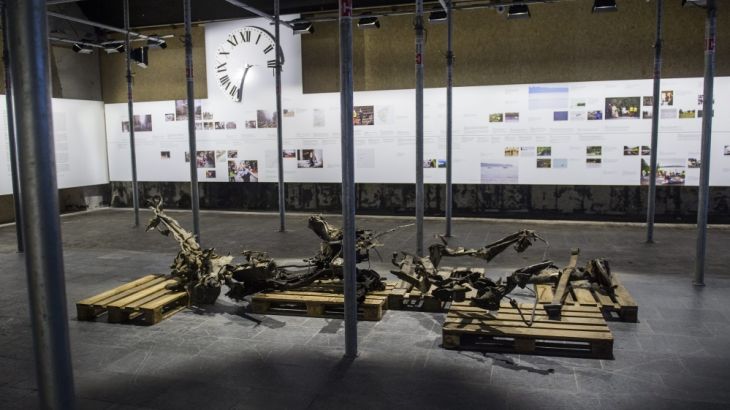Norway camp reopens four years after Breivik massacre
Four years after Anders Behring Breivik killed 69 people on Utoya island, Labour Party’s youth camp begins seminars.

Four years after Anders Behring Breivik killed 69 people on Utoya, a flood of newcomers will be arriving on the Norwegian island as the Labour Party’s youth camp opens for the first time since the massacre.
Ahead of the opening of the camp on Friday, Emilie Bersaas, a camp organiser, said those attending will not allow “that dark day to overshadow the nice and bright” memories of past camps or future weekend youth meetings and social events.
Keep reading
list of 4 itemsIsraeli settlers set fire to cars, homes of Palestinians under occupation
Gunmen kill at least 11 in two attacks in Pakistan’s Balochistan
A knotty question of parent liability in the Crumbley school shooting case
After killing eight people in a bomb blast at government buildings in the centre of Oslo on July 22, 2011, Breivik, a self-styled “militant nationalist,” took a boat to Utoya where he randomly shot students as he walked through the island.
The killings in the capital and the island, which is owned by the Labour Party’s youth wing and located about 40km from Oslo, shocked the nation of five million people where such acts of violence are a rare occurence.
About one in four people in Norway were affected by the massacre, through connections with family, friends, work or acquaintances of victims.
Opinion: Has Norway reclaimed Utoya?
More than 1,000 students have enrolled for three days of seminars.
Many of the island’s traditional red-and-white wooden buildings have been renovated and construction continued feverishly throughout the week to complete new conference and meeting rooms in Scandinavian-style glass and wood design.
A bright circular steel memorial engraved with the victims’ names has been given pride of place among pine trees on a secluded spot overlooking the Tyrifjorden lake.
‘Heinous acts’
|
|
The attack left lasting traces on Utoya, including the dark green cafeteria which bears the bullet marks of the murder of 13 people.
It has not been renovated and will open as a centre for learning after another building has been built around it.
In 2012, Breivik was convicted of mass murder and terrorism and was given a 21-year prison sentence that can be extended for as long as he is deemed dangerous to society, which legal experts say is likely to mean he will remain in jail for life.
In July, Breivik won a place to study at the University of Oslo from solitary confinement in prison, despite the outrage over his massacre.
During last month’s fourth anniversary commemoration ceremony in Oslo, Prime Minister Erna Solberg said July 22, 2011, will always remain a dark day in the country’s history for “scenes of evil and heinous acts,” and that the victims are “remembered with love” and will never be forgotten.
She later inaugurated a July 22 Centre, which shows how the assailant carried out the attacks – an initiative some opposed on the grounds that it was too poignant.
Since the shooting, 16 regional support groups and a national organisation have been set up to help families of the victims.
The memorial on the island shows the victims’ names, engraved in longhand, on a steel circle suspended in the air.
The youngest of those killed was that of a 14-year-old boy; the oldest that of Breivik’s first target on the island, a 45-year-old security guard.
![The memorial on the island shows the victims' names, engraved in longhand, on a steel circle suspended in the air [Getty Images]](/wp-content/uploads/2015/08/c7c7438f6c4047ddb6e4de34f09290d0_18.jpeg)